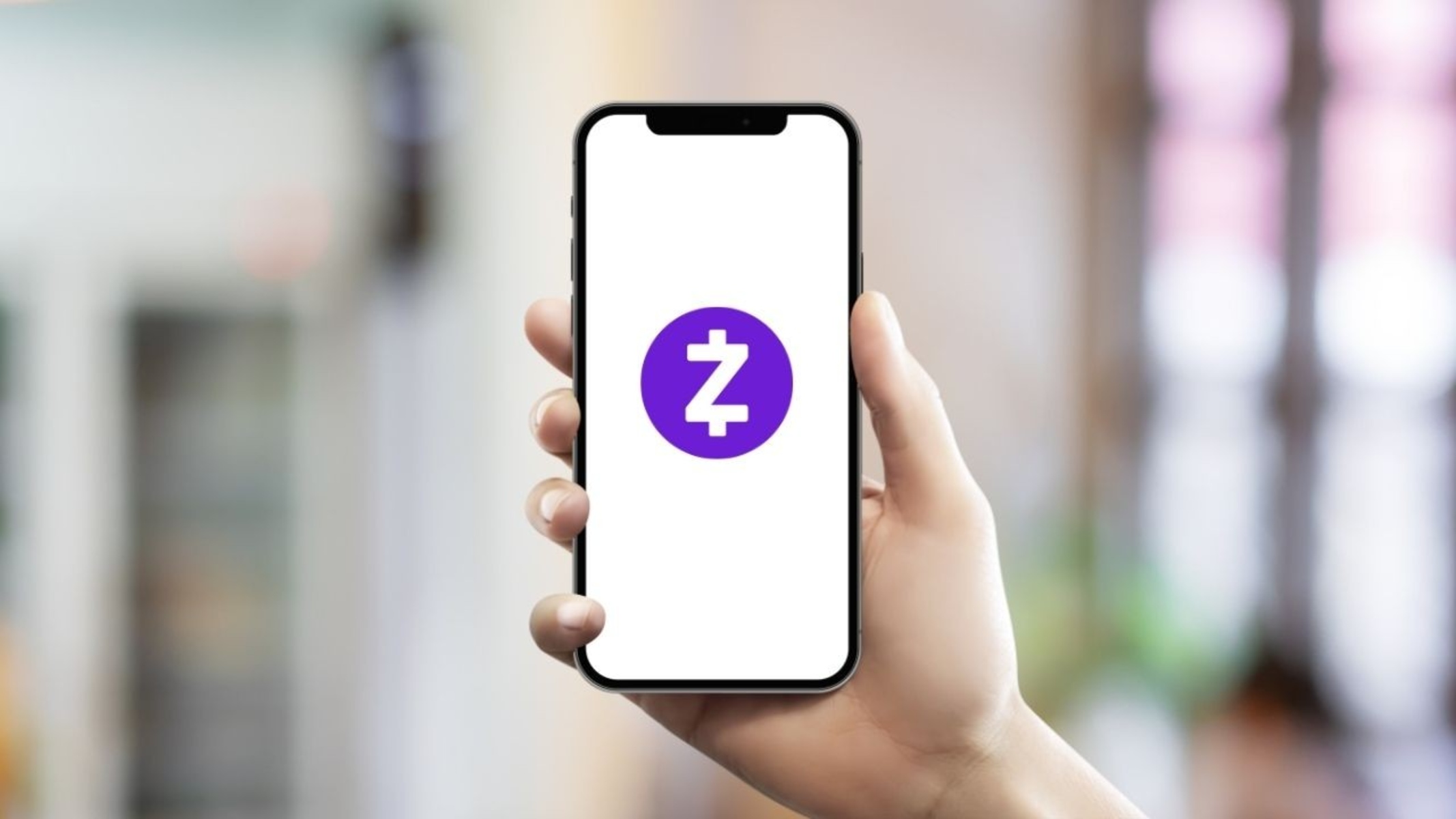Introduction
Welcome to our comprehensive guide on the fees charged by banks for international money transfers. If you’ve ever sent or received money from another country using a bank, you may have noticed that there are various fees involved in the process. Understanding these fees can help you make informed decisions and potentially save money when transferring funds across borders.
International money transfers are a common financial activity, whether you’re sending money to a loved one overseas, paying for an international purchase, or receiving funds from a foreign client. Banks play a crucial role in facilitating these transactions, providing a secure and convenient means of transferring money globally.
However, it’s essential to be aware that using a bank for international money transfers can come with a cost. Banks charge fees for their services, and these fees can vary significantly depending on several factors, including the amount being transferred, the destination country, and the specific bank you’re using.
In this guide, we will explore the different types of fees banks charge for international money transfers and provide tips on how to reduce these costs. We will also compare the fees charged by various banks, allowing you to make an informed choice when selecting a provider for your international money transfer needs.
Transferring money internationally through a bank can offer convenience and security, but it’s important to understand the fees involved to avoid any surprises or unnecessary expenses. By familiarizing yourself with these fees and exploring ways to minimize them, you can ensure that your international money transfers are both cost-effective and efficient.
So, if you’re ready to dive into the world of international money transfer fees charged by banks, let’s get started!
Why use a bank for international money transfer?
When it comes to transferring money internationally, there are several options available, including using online money transfer services, money transfer agents, or even cryptocurrency platforms. However, one of the most common and trusted methods is to use a bank for international money transfers. Here are a few reasons why:
- Security: Banks are highly regulated and have robust security measures in place to protect your funds. They are equipped with advanced encryption technologies and financial safeguards, giving you peace of mind when transferring money internationally.
- Convenience: Most people already have a bank account, making it convenient to use them for international money transfers. You can initiate the transfer online, through mobile banking apps, or by visiting a branch, depending on the bank’s services and your preference.
- Wide Network: Banks have extensive networks of correspondent banks worldwide, allowing for efficient and widespread coverage when it comes to sending and receiving money across borders. This makes it easier to transfer funds to even remote locations.
- Regulatory Compliance: Banks strictly follow regulations regarding money laundering, fraud prevention, and financial transparency. This ensures that your international money transfer is compliant with legal requirements, reducing the risk of any potential issues.
- Exchange Rate Management: Banks often provide competitive exchange rates for international money transfers. This means you may get a favorable rate and potentially save money compared to other money transfer methods.
While there are other alternatives available, using a bank for international money transfers is a reliable and widely accepted option. It offers a range of benefits, including security, convenience, an extensive network, regulatory compliance, and competitive exchange rates. These factors make banks a preferred choice for individuals and businesses alike when it comes to transferring money across borders.
Factors Affecting the Cost of International Money Transfer
When it comes to international money transfers, several factors can influence the overall cost. Understanding these factors can help you make informed decisions and potentially save money. Here are the key elements that impact the cost of transferring money internationally:
- Transfer Amount: The amount of money you are sending or receiving plays a significant role in determining the cost. Banks often charge fees based on a percentage of the transfer amount. As a result, larger transfers may incur higher fees compared to smaller ones.
- Destination Country: The country where you are sending money to also affects the cost. Some countries have specific regulations or restrictions, which can lead to higher fees or additional charges. Additionally, exchange rates can vary depending on the destination country, impacting the overall cost of the transfer.
- Transfer Speed: The speed at which you want the money to be transferred can impact the cost. Banks may provide different options for transfer speeds, ranging from standard (which is usually cheaper) to expedited (which may incur higher fees).
- Foreign Exchange Rates: Exchange rates are a crucial factor in international money transfers. Banks make a profit by providing you with an exchange rate slightly different from the market rate. The difference between the market rate and the bank’s rate is known as the “spread.” A wider spread can result in higher costs for the sender or lower funds received by the recipient.
- Additional Services: Some banks offer additional services, such as currency hedging or locked-in exchange rates, which can come at an extra cost. These services can provide added security or convenience but may increase the overall cost of the transfer.
- Bank Policies and Charges: Each bank has its own fee structure and policies for international money transfers. It’s essential to compare the fees and charges of different banks to determine which one offers the most cost-effective solution for your needs.
By considering these factors, you can have a better understanding of the costs involved in international money transfers. It’s crucial to evaluate each element and weigh them against your specific requirements and budget. By doing so, you can make informed decisions and choose the most cost-effective option for transferring funds internationally.
Different Types of Fees Charged by Banks
When it comes to international money transfers, banks charge various fees to cover the costs of processing the transaction. Understanding these fees is essential to avoid any surprises and assess the overall cost of the transfer. Here are the different types of fees commonly charged by banks:
- Wire Transfer Fee: This is a flat fee charged by the bank to process the international money transfer. It covers the administrative costs involved in transferring funds from one account to another.
- Exchange Rate Markup: Banks typically offer an exchange rate for converting your funds into the recipient’s currency. However, they may apply a markup to the exchange rate, which is higher than the prevailing market rate. The difference between the market rate and the bank’s rate is where the bank makes a profit.
- Sending Fee: Some banks charge an additional fee for initiating the transfer. This fee is usually a flat amount or a percentage of the transfer amount and can vary depending on the bank and the specific transfer service used.
- Recipient Fee: In certain cases, the recipient’s bank may charge a fee for receiving the transferred funds. This fee is deducted from the total amount received by the recipient and can vary depending on the recipient’s bank and the destination country.
- Correspondent Bank Fee: In international money transfers, banks often use correspondent banks to facilitate the transaction. Correspondent banks help route the funds to the recipient’s bank. However, these intermediary banks may charge a fee for their services, which can be deducted from either the sender’s or the recipient’s funds.
- Additional Services Fee: Banks may offer additional services to enhance the international money transfer experience. These can include options like same-day transfers, currency hedging, or notification services. However, these value-added services usually come at an extra cost.
- Intermediary Bank Fee: If the transfer involves multiple intermediary banks, each bank may charge a fee for processing the transaction. This fee can be deducted from the transfer amount, resulting in a reduction of the funds received by the recipient.
It’s important to note that the fees charged by banks can vary depending on the specific bank, the destination country, and the amount being transferred. Comparing the fee structures of different banks and understanding the different types of fees involved can help you choose the most cost-effective option for your international money transfer needs.
Exchange Rate Charges by Banks
When it comes to international money transfers, banks not only charge various fees but also have control over the exchange rates used for currency conversion. These exchange rate charges can significantly impact the overall cost of transferring money across borders. Understanding how banks handle exchange rates is crucial to ensure you get the best value for your transfer.
Most banks offer their own exchange rates when converting one currency to another during an international money transfer. The exchange rate provided by the bank is often slightly higher than the market rate, and the difference is where the bank makes a profit. This is known as the exchange rate markup.
The exchange rate markup can vary between banks, and it’s important to compare rates to ensure you’re getting a fair deal. A smaller markup means you’ll receive a better exchange rate and, in turn, more money at the destination currency.
It’s essential to note that exchange rates offered by banks can fluctuate throughout the day due to changes in the foreign exchange market. This means the rate you see at the time of initiating the transfer may differ from the rate when the transfer is completed. Some banks may provide a guaranteed or locked-in rate, which can offer certainty about the final amount received.
One way to mitigate the impact of exchange rate charges is to consider using specialist currency providers or online money transfer services. These providers often offer more competitive exchange rates compared to traditional banks, allowing you to save money on your international money transfers. However, it’s important to research and compare different providers to ensure their reliability and trustworthiness.
When choosing a bank for your international money transfers, it’s crucial to consider not only the fees but also the exchange rates they offer. A lower exchange rate markup can potentially save you a significant amount, particularly for larger transfer amounts. Comparing exchange rates and exploring alternatives may help you secure the best possible value for your money when sending funds internationally.
Sending Fees and Recipient Fees
When sending money internationally through a bank, it’s important to be aware of the sending fees charged by the bank as well as any potential fees that the recipient may incur. These fees can vary depending on the bank, the transfer method, and the destination country. Understanding these charges will help you anticipate the total cost of your international money transfer.
Sending Fees: Banks often charge a fee for initiating an international money transfer. This fee can be a flat amount or a percentage of the transfer amount. The exact fee structure varies among banks, so it’s crucial to compare the fees of different banks to determine which one offers the most cost-effective option for your transfer needs.
Some banks may offer different fee structures based on the transfer method used. For example, online transfers or wire transfers may have different sending fee amounts. It’s important to inquire about these details and choose the most suitable transfer method based on your requirements and budget.
Recipient Fees: In addition to the sending fees charged by the sender’s bank, the recipient’s bank or financial institution may also impose fees for receiving the transferred funds. These fees can vary depending on the recipient’s bank and the destination country. The recipient fees can either be a fixed amount or a percentage of the received funds.
It’s important to note that recipient fees are deducted from the total amount received by the recipient. As a sender, you may want to consider the potential impact of recipient fees on the final amount received before initiating the international money transfer.
To mitigate recipient fees, you may want to explore alternative transfer methods, such as using online money transfer services or specialized remittance providers. These platforms may offer lower or waived recipient fees, resulting in higher funds received by the recipient.
When considering the overall cost of your international money transfer, it’s crucial to factor in both sending fees and potential recipient fees. Understanding these charges and comparing them among different banks and transfer methods will help you make an informed decision and select the most cost-effective option for your specific transfer needs.
Additional Fees and Hidden Charges
When it comes to international money transfers through banks, it’s important to be aware of not only the obvious fees but also any potential additional fees or hidden charges that may be associated with the transaction. These fees can add up and significantly impact the overall cost of your transfer. Here are some additional fees and hidden charges to consider:
Intermediary Bank Fees: In some cases, when transferring money internationally, the funds may pass through one or more intermediary banks. These banks help facilitate the transfer between the sender’s bank and the recipient’s bank. Each intermediary bank in the transaction may charge a fee for their services, which can be deducted from the transfer amount. It’s important to inquire about any potential intermediary bank fees when initiating the transfer.
Correspondent Bank Fees: Correspondent banks act as intermediaries to facilitate transactions between different banks within the global financial system. When it comes to international money transfers, correspondent banks can charge fees for their services. These fees can either be deducted from the sender’s funds or the recipient’s funds. It’s crucial to consider the potential impact of correspondent bank fees on the total amount received by the recipient.
Currency Conversion Charges: If you’re transferring funds in a currency that is different from your bank account’s currency, the bank may charge a fee for the currency conversion. This fee can be in the form of an additional percentage charge or a flat fee. It’s important to inquire about the currency conversion charges and factor them into the overall cost of your international money transfer.
Foreign Transaction Fees: Some banks impose foreign transaction fees on cross-border money transfers. These fees are separate from the sending fees and can be charged as a percentage of the transfer amount or a fixed fee. It’s important to check with your bank to determine if they have any foreign transaction fees and how they may impact the cost of your international money transfer.
Hidden Charges: In some cases, there may be hidden charges associated with international money transfers that are not clearly communicated upfront. These can include fees for services such as processing delays, cancellation fees, or amendments to the transfer details. It’s crucial to thoroughly review the terms and conditions of your bank’s international money transfer services to uncover any potential hidden charges.
To avoid unexpected additional fees and hidden charges, it’s recommended to carefully read the terms and conditions of your bank’s international money transfer services. Additionally, consider exploring alternative transfer methods and comparing the fee structures of different banks to ensure you’re selecting the most cost-effective option for your international money transfer needs.
Comparison of International Money Transfer Fees by Different Banks
When it comes to international money transfers, the fees charged by banks can vary significantly. Comparing the fee structures of different banks is essential to ensure you’re getting the most cost-effective option for your transfer. Here’s a comparison of international money transfer fees by different banks:
Bank A: Bank A charges a flat fee of USD 25 for international money transfers. They also apply a 2% exchange rate markup on currency conversions. Additionally, they do not charge any recipient fees, making them a competitive option for transferring funds across borders.
Bank B: Bank B has a tiered fee structure based on the transfer amount. For transfers up to USD 1,000, they charge a fee of USD 10. For transfers between USD 1,000 and USD 5,000, the fee increases to USD 15. Transfers above USD 5,000 incur a fee of 0.5% of the transfer amount. They apply a 1.5% exchange rate markup and no recipient fees, making them more suitable for larger transfers.
Bank C: Bank C offers online money transfers with a flat fee of USD 20. They have a competitive exchange rate with a 1% markup. However, they charge a recipient fee of USD 5 for transfers to certain countries, which should be considered when calculating the overall cost.
Bank D: Bank D has a different fee structure depending on the transfer method chosen. For online transfers, they charge a flat fee of USD 12. For wire transfers initiated at a branch, the fee is USD 30. They also apply a 1.5% exchange rate markup and do not charge any recipient fees.
Bank E: Bank E offers a fee-free option for international money transfers if both the sender and recipient have accounts with the bank. However, they have a 1.5% exchange rate markup. If the recipient doesn’t have an account with the bank, they charge a recipient fee of USD 10.
It’s important to note that these fees are provided as examples and may vary depending on your specific location and the currencies involved. It’s recommended to directly inquire with the banks to get the most up-to-date and accurate information regarding their international money transfer fees.
When comparing the fees charged by different banks, consider the transfer amount, exchange rate markup, sending fees, and recipient fees. This will help you determine the most cost-effective option for your specific transfer needs. Additionally, keep in mind that fees are just one aspect to consider, and factors such as exchange rates, transfer speed, and customer service should also be taken into account when selecting a bank for your international money transfers.
Tips to Reduce the Cost of International Money Transfer through Banks
International money transfers through banks can incur various fees and charges. However, there are several strategies you can employ to reduce the overall cost of these transfers. Here are some tips to help you save money on your international money transfers:
- Compare Transfer Fees: Different banks have different fee structures for international money transfers. Take the time to compare the fees charged by various banks to find the most cost-effective option for your specific transfer.
- Consider Online Transfers: Online money transfers through banking platforms are often more cost-effective than in-person or wire transfers. Online transfers typically come with lower fees and sometimes even fee-free options, making them a preferable choice.
- Monitor Exchange Rates: Exchange rates fluctuate constantly. Keep an eye on exchange rates and consider initiating your transfer when the rates are most favorable. Small differences in exchange rates can make a significant impact on the amount received by the recipient.
- Avoid Urgent Transfers: If possible, plan ahead and avoid last-minute or urgent transfers. Expedited transfers often come with higher fees and unfavorable exchange rates. By planning in advance, you can choose regular transfer options with lower costs.
- Bulk Transfers: If you frequently send money internationally, consider consolidating multiple transfers into a single transaction. Banks may offer discounts or reduced fees for larger transfer amounts, saving you money in the long run.
- Explore Specialist Money Transfer Providers: Specialist money transfer providers or online remittance services often offer competitive rates and lower fees compared to traditional banks. Research and compare these providers to find the best option for your international money transfers.
- Negotiate Fees: In some cases, especially if you are a longstanding customer, banks may be open to negotiating or waiving certain fees. It never hurts to inquire and explore if there are any opportunities to reduce fees for your international money transfers.
- Avoid Unnecessary Services: Be mindful of additional services offered by banks that may come at an extra cost. Evaluate whether these services are essential for your specific transfer needs or if you can opt for a more basic service to save money.
- Consider Alternative Transfer Methods: Depending on your situation, alternative transfer methods such as peer-to-peer platforms or cryptocurrency may offer lower fees and better exchange rates compared to traditional banks. It’s wise to explore these options and compare the costs and benefits.
By implementing these tips, you can minimize the cost of your international money transfers through banks. It’s important to be proactive, do your research, and consider all the factors involved, including fees, exchange rates, and transfer methods. By making informed choices, you can save money and ensure a smooth and cost-effective process for your international money transfers.
Conclusion
International money transfers through banks can come with various fees and charges, which can significantly impact the overall cost of your transfer. By understanding these fees and exploring ways to minimize them, you can make your international money transfers more cost-effective. Here’s a recap of the key points discussed:
– Using a bank for international money transfers offers security, convenience, and a wide network. Banks are highly regulated and provide a trusted means of transferring funds globally.
– Factors such as transfer amount, destination country, transfer speed, and exchange rates affect the cost of international money transfers. It’s important to consider these factors and weigh them against your specific requirements.
– Banks charge different types of fees, including wire transfer fees, exchange rate markup, sending fees, and recipient fees. Understanding these fees is crucial for assessing the total cost of your transfer.
– Exchange rate charges by banks can vary, and even slight differences in exchange rates can impact the funds received by the recipient. Comparing exchange rates and considering alternatives can help you secure better value for your money.
– Additional fees and hidden charges, such as intermediary and correspondent bank fees, currency conversion charges, and foreign transaction fees, should be considered when calculating the overall cost of your transfer.
– Comparing the fees charged by different banks, exploring online transfer options, and considering alternative transfer methods can help you reduce the cost of your international money transfers.
It’s important to note that the fees and charges discussed in this guide are provided as examples and may vary depending on your specific location, currencies involved, and the banks themselves. It is always recommended to directly inquire with the banks to get the most accurate and up-to-date information regarding their international money transfer fees.
By being proactive, conducting thorough research, and considering all the relevant factors, you can make informed decisions and choose the most cost-effective option for your international money transfers. This way, you can save money, ensure the smooth transfer of funds, and meet your financial needs across borders with confidence.

























